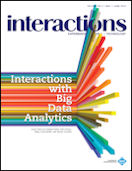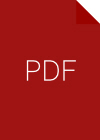HOME
PORTFOLIO: NICOLA HARDY
HOME
BACK
TO
TOP
NICOLA HARDY [Year One]
BSc (Hons) Digital Media - UWE BRISTOL
E: Nicola2.Hardy@live.uwe.ac.uk
Nicola2.Hardy@live.uwe.ac.uk
Created with HotGlue
HotGlue
READING
Circles and Props - Making Unknown Technology
Reference: Andersen, K. and Wilde, D. (2012) Circles and props: making unknown technology. Interactions. 19 (3), pp. 60-65.
Written by: Kristina Andersen and Danielle Wilde.
Paper 1:
Paper 1 Feedback Notes:
I found this paper very interesting and felt that this kind of experimental process could bring to light very different and potentially useful technologies. I particularly liked the way the participants were taken through the experience from a completely abstract concept through to a final real world object. The area that had been chosen created a good creative environment and children also taking part would have further freed the adults involved to let their creative mind become even freer to explore further possibilities to what they were creating.
Weekly Reading
During the first semester of year one I was given the task of reading a selected paper and giving feedback on it each week. We were asked to think about how we felt about the paper including the writers writing style, the papers overall layout and the subject matter being discussed.
I have used this opportunity to expand my academic reading skills and I have also begun to build my own referencing list using Mendeley, a free reference manager which I feel will be extremely useful to me throughout my degree and beyond.
By carrying out these reading tasks each week I have gained confidence in discussing my ideas more openly in front of others and in turn also gained insight into what fellow piers points of views were on the papers through debates and further group discussions.
Please find below details of each paper read and reference, as well as feedback notes I have made.
Paper 2 Feedback Notes:
My view of annotated portfolios are that they are a very useful means of exhibiting work and communicating ideas. The paper I felt though didn't fully discuss the benefits of this form of display in a way that was clear to me. The paper looked into the projects which the writers had been participating in with further detail than the actual means of presenting the work in this format. I did however enjoy this paper and found the projects discussed and processes used extremely interesting but still found the paper a little off topic in accordance to its title.
Paper 2:
Annotated Portfolios
Written by: Bill Gaver and John Bowers.
Reference: Gaver, B. and Bowers, J. (2012) Annotated portfolios. Interactions. 19(4), pp. 40-49.
Papers:
Paper 3:
Taking Our Sweet Time to Search
Written by: Marian Dörk, Peter Bennett and Rosamund Davies.
Reference: Dörk, M., Bennett, P. and Davies, R. (2013) Taking our sweet time to search. CHI 2013 Workshop on Changing Perspectives of Time.
Paper 3 Feedback Notes:
This paper nostalgically compares older forms of search with newer forms of search. It looks at the process that used to be where a researcher would physically walk to a library, browse real books and interact directly with people in order to find information they were seeking. It makes the point that in order to retain a deeper understanding of information gained a slower form of search is necessary compared to today’s standard instant searches. They suggest a slower form of search should be integrated into search but I feel that this should be the individual user's choice.
Paper 4:
Overcoming Procrastination with ReMind
Written by: Matthias Laschke, Marc Hassenzahl and Jan Brechmann.
Reference: Laschke, M., Hassenzahl, M. and Brechmann, J. (2013) Overcoming Procrastination with ReMind. Proc. DPPI 2013, 77–85.
Paper 4 Feedback Notes:
ReMind is an object designed to help the user overcome procrastination by being a constant tangible reminder of tasks the user needs to carry out. The object itself is a wooden wheel which turns over the period of one month with a section for each day. A task is placed on the day it needs to be completed then drops into a catcher to remind the user. The paper refers to a case study in which the subject using ReMind found it to be a very helpful tool for her though the case study itself is by nature floored as the subject is interviewed which may contribute to her lack of procrastination.
Paper 5:
New Media, New Craft?
Written by: Andrew Richardson.
Reference: Richardson, A. (1998). New Media , New Craft ? Electronic Art and Animation Catalogue, 157–159.
Paper 5 Feedback Notes:
This paper looks at the differences between traditional craftsmanship and that of a digital artist. Richardson asks the question, is a digital artist a modern crafts person working in a new media or is it a completely separate skill? For me this paper made me ask even further questions as he talks about someone who codes to have more of a craftsmanship over someone who simply uses software such as Photoshop to create their art but does this mean if an artist were to create his own paint and canvas he would somehow be a more creditable artist?
Paper 6:
Distinguishing Concepts Lexicons of Interactive Art and Architecture
Written by: Usman Hacque.
Reference: Haque, U. (2007) Distinguishing concepts: Lexicons of interactive art and architecture. Architectural Design. 77(4), pp. 24–31.
Paper 6 Feedback Notes:
Hacque has written this paper on the vocabulary used when describing architecture and technology. I like how well laid out the paper is with sub-headlining’s accurately describing each discussion. ‘Interactive’, ‘open-source’, ‘the user’ and ‘public and private’ where all discussed including their original meanings and how they are currently being used to articulate ideas within the fields. He states the purpose of this paper is to look at what can be obscured by the language used but I feel it would be difficult to find other words to replace these words without finding similar faults.
Papers:
Paper 7:
Theories and Practice of Design for Information Systems: Eight Design Perspectives in Ten Short Weeks
Written by: David G. Hendry and Batya Friedman.
Reference: Hendry, D.G. and Friedman, B. (2008) Theories and Practice of Design for Information Systems: Eight Design Perspectives in Ten Short Weeks. ACM Designing Interactive Systems [online].
Paper 7 Feedback Notes:
This paper discusses a 10 week design course for students from varied subject backgrounds and feels very familiar to what I myself am currently studying on this course. Each week is based on a different design perspective from Design as Reflection and Design as Social Process through to Design as Hierarchical Decomposition and Design for Human Values. Students then during the last week of the course had a Design Expo. I found both the design of the course and paper very well structured and it demonstrated well how many different forms of design perspectives there are.






